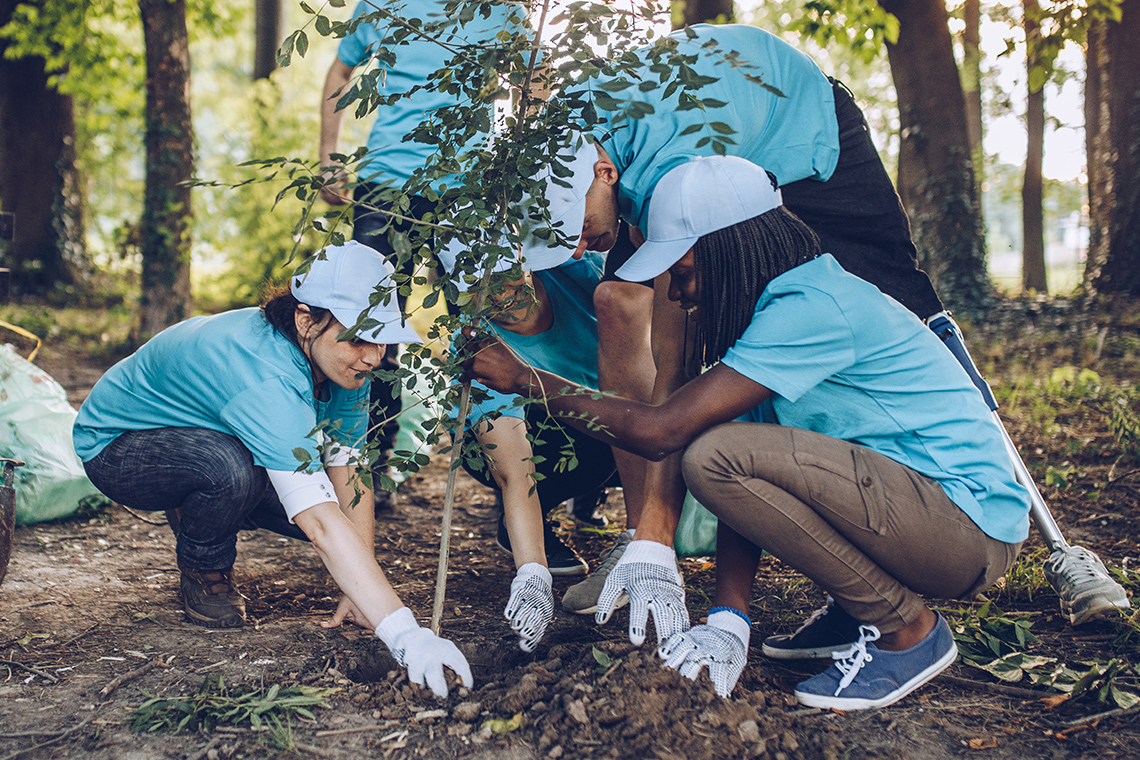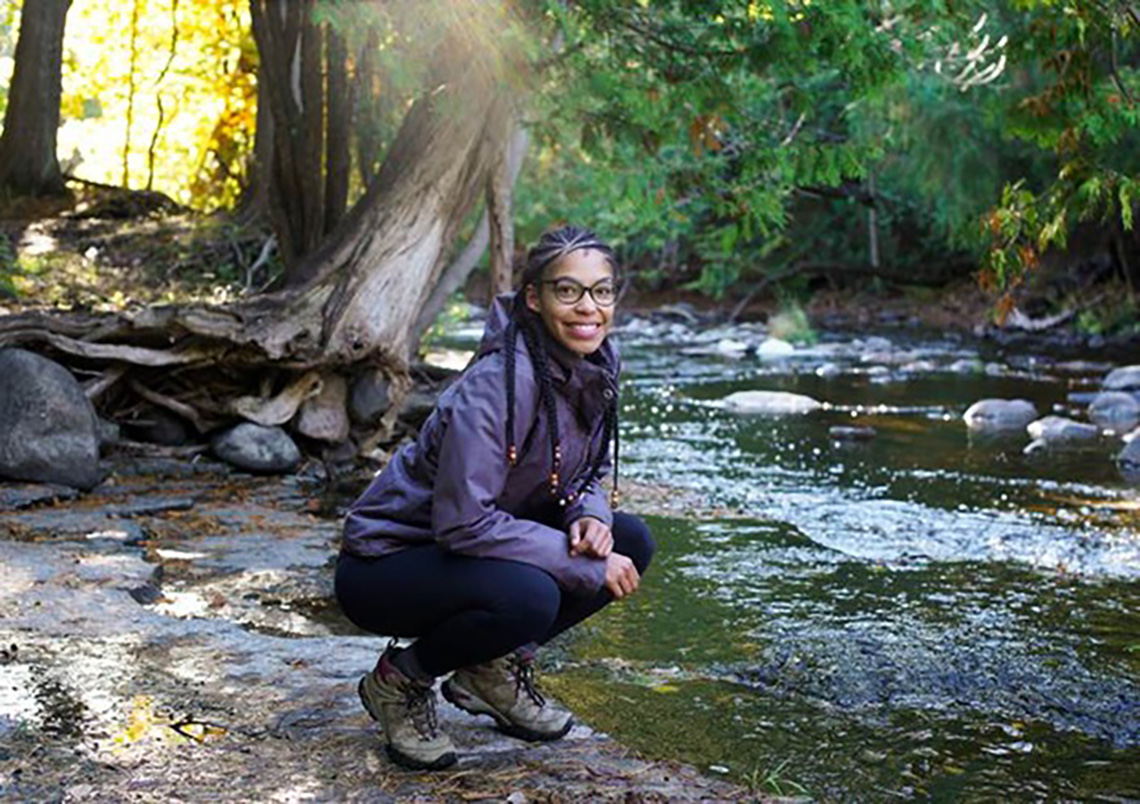Minds On
My climate change knowledge

Before learning more about how to combat climate change, activate your prior knowledge by answering the following questions.
- What do you already know about climate change?
- What questions do you have about climate change?
Below you will see a graphic organizer called RAN chart. A RAN chart, or Reading and Analysing Non-Fiction texts chart, will help you track your learning in this activity. Complete the first two columns of the RAN Chart below before moving forward in this learning activity. At the end of this learning activity, you will be following up to complete the last three columns of the RAN chart.
Press the following tabs to access the columns of the RAN Chart.
Go back to the first section of your chart and record ideas that were confirmed (accurate/ true) about what you already knew about climate change.
Record any information that you thought was true at the beginning but learned was incorrect or not quite as you had thought.
Record new information that you learned, and hopefully answer any of your wonderings.
Complete the RAN Chart in your notebook or using the following fillable and printable document. If you would like, you can use speech-to-text or audio recording tools to record your thoughts.
|
What I Think I Know |
What I Wonder |
What Was Confirmed |
Misconceptions |
New Learning |
|---|---|---|---|---|
Press the ‘Activity’ button to access RAN Chart.
Action
Ontario connection
This learning activity highlights people, places, or innovations that relate directly to the province of Ontario. Enjoy the exploration!

Task 1: Connections or disconnections with the land
Explore the video “Connection to the Land” with Sandra Indian who is from the Ojibways of Onigaming First Nation located in Northwestern Ontario.
Respond to the following questions using a method of your choice.
- What do you think “we are all people of the land” means?
- What do you think Sandra means when she says we have all become “disconnected” from the land?
- What responsibilities do all humans have to ensure that land remains healthy? How can you show your respect and responsibility to the land?
Climate change is the significant, long-term change in the world’s climate, which is brought about by humans and natural factors. It is one of the greatest threats to humanity and if we do not take action, the impacts of climate change are going to get much worse. Climate change impacts:
- Frequency and intensity of extreme weather events
- Shrinking ice sheets and warming of the artic sea
- Decreased snow coverage and melting glaciers
- Ocean acidification, warming oceans, and sea level rise
One key element in the fight against climate change is Indigenous knowledge systems. There is no universal definition for an Indigenous knowledge system as all Indigenous communities have diverse knowledge systems.
Every nation and community approaches sustainability from a different lens. Laws about sustainability are shaped by the knowledge and understanding gained through scientific research and knowledge systems. But most, if not all, Indigenous communities believe that humans, fish and animals are all equal and that everything, including the land and the waters, have a spirit that needs to be protected. Therefore, Indigenous people believe that land should be shared by the community, rather than sold and owned by individuals. This ecological knowledge derives from the long history of Indigenous peoples living on the land, with successive generations learning about the specific plants, environment, and ecological factors that exist within a given area.
This knowledge is passed from Indigenous knowledge keepers, Elders and community members who convey knowledge through teachings, traditions and ceremonies and other activities that transmit and preserve knowledge from generation to generation. Indigenous methods for managing land and resources contribute to biodiversity and help to reduce deforestation, carbon emissions, and the risk of wildfires. Indigenous communities offer a holistic view of the world which will play a key role in the fight against climate change.
Next, explore the video “Relationship with the Land and Water” with various community members from Kitchinuhmaykoosib Inninuwug (KI) First Nation. Kitchinuhmaykoosib Inninuwug First Nation is an Oji-Cree community, located over 500 kilometers north of Thunder Bay. As you engage with the video, think about how the perspectives shared could help fight climate change.
Based on what you learned from Sandra and the community members in Kitchinuhmaykoosib Inninuwug First Nation, how do you think Indigenous worldviews and knowledge systems could help fight climate change?
How would you describe your relationship with the land around you? Is there anything you might change or do differently based on the teachings shared? How might you reconnect to the land? Record your ideas in a method of your choice.
Task 2: Careers
STEM

Although the Science (biology, chemistry, etc.) and Math (algebra, calculus, etc.) parts of the abbreviation may be easy to figure out, the Technology and Engineering parts may be less obvious. To clarify, technology includes topics like computer programming, analytics, and design. Engineering includes numerous topics such as electronics, robots, and civil engineering. STEM learning integrates these disciplines. Generally, STEM gives students “real-world” learning opportunities and encourages hands-on learning while allowing students to apply knowledge from science, math, technology and engineering seamlessly to solve problems.
As we scientists and researchers around the world continue to explore ways to reduce climate change, we are going to need innovators with STEM skills who can understand the causes of climate change, and Earth’s systems. Having STEM skills is important for combatting climate change. Canadian youth need to be inspired and equipped to examine the impacts of climate change on their lives now, and in the future.
Connections
Career Profile: Sandra Klemet-N’Guessan

Who is Sandra Klemet-N’Guessan? She is a 24-year-old Canadian who is completing her PhD in Aquatic Ecology at Trent University in Peterborough, Ontario. She was inspired in grade 10 to learn more about climate change and save the planet using STEM! She is currently studying the urine of fish and invertebrates to explore how different nutrient components vary to relative species and the type of water they live in. Sandra has been studying how the impacts of climate change have caused a “brownification” of waters. The “brownification” of waters happens when organic matter limits how much light can filter through, which impacts the food web. Through her research, she aims to paint a picture of what could happen to our waters in the future as a result of climate change and predict ways to save the aquatic future.
Conservation Authorities

Another career that is combating climate change in Ontario is Conservation Authorities. Conservation Authorities focus on adaptation and mitigation.
|
Adaptation Conservation Authorities address the impacts of climate change as well as protect the ecosystem benefits that we rely on by monitoring, tracking, and reporting on local conditions in Ontario’s watersheds which can be used for climate change modelling and monitoring. They work towards ensuring sustainable water supplies, protecting biodiversity, and addressing water issues. |
Mitigation Conservation Authorities address greenhouse gas reduction by increasing sustainable transportation and energy conservation technologies and practices. They build green technologies that help reduce greenhouse gas emissions including reforestation and enhancing habitats. |
Conservation Authorities carry out various land management activities to protect, enhance, and restore natural lands, such as:
- Forest Management / Tree Planting
- Natural Heritage Protection
- Restoration of Forests
- Stormwater Management
- Shoreline Restoration and Protection
- Soil Conservation
- Water Management
- Environmental Education
Choose one of these land management activities to explore further. Explore how this activity is addressing climate change and protecting Ontario’s environment. When researching, be sure to choose reputable or verified sites to collect your information.
Record your ideas in a method of your choice or use the following graphic organizer.
Before beginning your research, explore this video that explains the Scientific Research Process. This will help guide you as you work your way through this activity.
Check out this video to learn about the steps of the Scientific Research Process.
I can choose resources by…
I can analyze and interpret findings by…
Complete the “Conservation Activity Chart” in your notebook or using the following fillable and printable document. If you would like, you can use speech-to-text or audio recording tools to record your thoughts.
|
Chosen Activity: |
|
|
How does this activity address climate change? How is it helping? |
|
|
How does it protect Ontario’s environment? |
|
|
Are there any specific areas in Ontario where this land management activity is taking place? |
|
Press the ‘Activity’ button to access Conservation Activity Chart.
Consolidation
RAN chart

Now that you have completed this learning activity, complete the remainder of your R-A-N chart by filling in What was Confirmed, Misconceptions, and New Learning.
Press the following tabs to access the sections of the RAN (Reading and Analysing Non-Fiction) Chart.
Record what you believe you already know about climate change. Record all your ideas even if you’re not sure if they are accurate. You will have a chance to revisit them and either confirm them or identify them as a misconception.
What are you curious to learn more about when it comes to climate change?
Go back to the first section of your chart and record ideas that were confirmed (accurate/ true) about what you already knew about climate change.
Record any information that you thought was true at the beginning but learned was incorrect or not quite as you had thought.
Record new information that you learned, and hopefully answer any of your wonderings.
Complete the “RAN Chart in your notebook or using the following fillable and printable document. If you would like, you can use speech-to-text or audio recording tools to record your thoughts.
|
What I Think I Know |
What I Wonder |
What Was Confirmed |
Misconceptions |
New Learning |
|---|---|---|---|---|
Press the ‘Activity’ button to access RAN Chart.
Message
Create a short message, in a method of your choice, that explains how Conservation Authorities are mitigating climate change and how others can get involved!
How could you inform others of the work that the Conservation Authorities are doing to mitigate climate change?
Consider the following:
- Who is your audience? Who would you like to inform?
- What would be the best format (speech, letter, etc.)
- What information would you want to include?
Reflection
As you read the following descriptions, select the one that best describes your current understanding of the learning in this activity. Press the corresponding button once you have made your choice.
I feel…
Now, expand on your ideas by recording your thoughts using a voice recorder, speech-to-text, or writing tool.
When you review your notes on this learning activity later, reflect on whether you would select a different description based on your further review of the material in this learning activity.